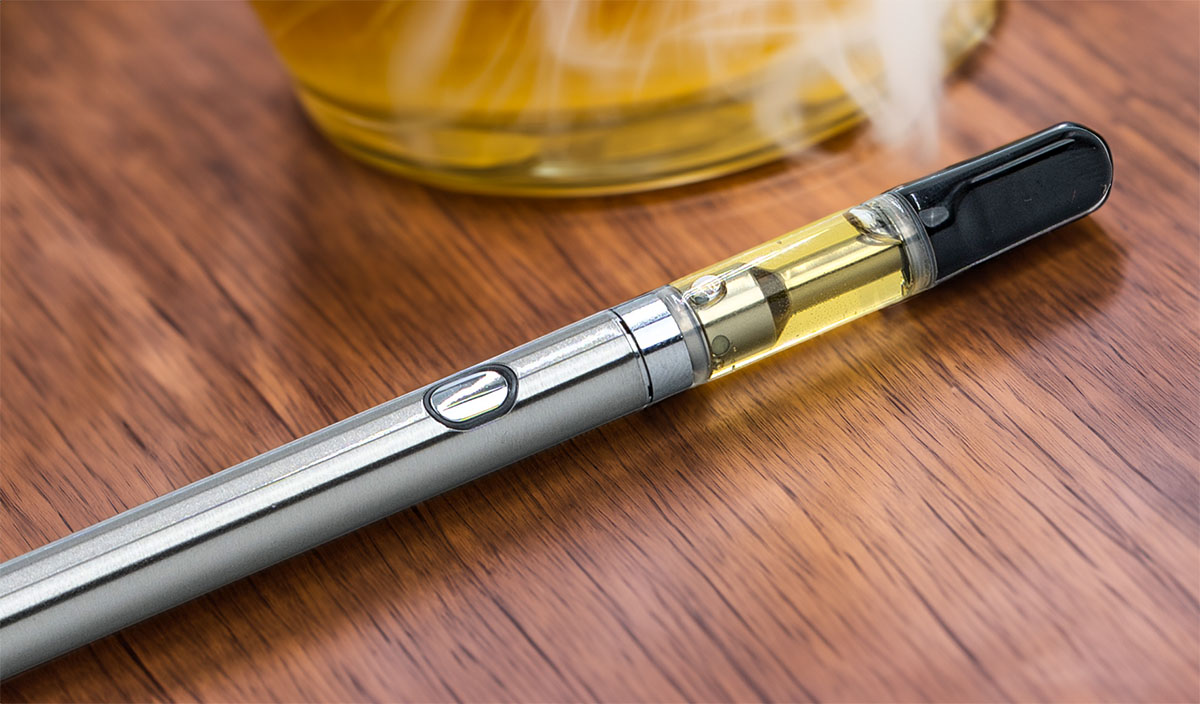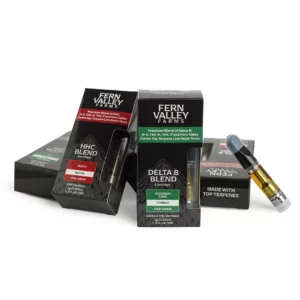Whether you’re a seasoned vaper or new to the scene, you’ve likely encountered the frustrating hiccup of a clogged vape at least once. Fear not, for we’re here to guide you through the causes of this common issue and arm you with solutions to keep your vaping experience smooth and enjoyable.
The Root of the Problem: Why Do Vapes Clog?
The root of the problem concerning clogs in vapes, especially those with thicker distillates such as Delta-8, HHC, and CBD concentrates, lies primarily in the physical properties of these substances. Here are the key factors contributing to the clogging issue:
- High Viscosity of Thicker Distillates:
- Thicker distillates have a higher viscosity compared to thinner oils. This means they flow more slowly and can solidify or become extremely viscous at lower temperatures or when not in use. When the vape cools down after use, the distillate can harden or thicken within the device’s airway or around the heating element, leading to blockages.
- Temperature Fluctuations:
- The process of heating and cooling that occurs during and after vaping contributes significantly to clogging. Heating thins the distillate, allowing it to move freely and be vaporized. However, once the device is turned off and cools down, the temperature drop causes the distillate to return to its thicker state, which can lead to it sticking to the inner surfaces of the vape, eventually causing a blockage.
- Residue Buildup:
- Continuous vaporization of thick distillates can lead to the accumulation of residue within the vape’s components, particularly around the coil and in the airway. This residue can harden over time, further contributing to the clogging issue. Cannabis-derived terpenes present in the distillate, while enhancing flavor and therapeutic benefits, can also add to this residue, as they are vaporized along with the cannabinoids.
- Inadequate Device Design:
- Some vaping devices are not optimally designed to handle the unique challenges presented by thicker distillates. For example, the size of the airway, the type of wicking material used, and the efficiency of the heating element can all influence how well the device handles thicker oils. Devices that fail to account for the high viscosity of these distillates are more prone to clogging.
- User Behavior:
- How a user operates the vape can also impact clogging. Taking long, continuous draws can overheat the distillate, while infrequent use allows the oil to cool and thicken, increasing the risk of clogs. Proper maintenance and cleaning habits can mitigate this, but neglect can exacerbate the problem.
Clearing the Path: Unclogging Your Vape
Immediate Solutions for Unclogging
- Preheat Function:
- If your vape has a preheat function, use it. This feature warms up the distillate, making it less viscous and potentially clearing the clog by allowing the thick oil to flow more freely.
- Warm Compress:
- Apply a warm compress around the device, especially near the cartridge or tank. You can use a warm (not hot) cloth or place the device in a sealed bag and submerge it in warm water for a few minutes. The warmth helps to thin the distillate, potentially clearing the clog.
- Gentle Suction:
- Try gently inhaling without turning on the device. This can sometimes create enough suction to dislodge the clog. Be careful not to inhale too strongly, as this might flood the heating element once the clog is cleared.
- Paperclip Method:
- Use a small, thin object like a paperclip or toothpick to gently poke through the airway. This can help to physically clear the clog. Ensure the device is off and cool before attempting this, and be careful not to damage the internal components.
- Cleaning with Isopropyl Alcohol:
- For removable parts, consider a thorough cleaning with isopropyl alcohol. Detach the components and soak them in isopropyl alcohol for an hour, then let them dry completely before reassembling. This can dissolve the residue causing the clog. Do not use this method on parts containing electrical components or the battery.
Preventive Measures
- Regular Maintenance:
- Clean your vape regularly, especially after heavy use. Regular maintenance can prevent residue buildup that leads to clogs.
- Use at Consistent Intervals:
- Try to use your vape at regular intervals rather than letting it sit unused for extended periods. This can help prevent the distillate from hardening inside the device.
- Proper Storage:
- Store your vape upright and in a cool, dry place to minimize the risk of clogs. Avoid leaving it in hot or cold environments, as extreme temperatures can affect the viscosity of the distillate.
- Device Selection:
- Choose a vape designed for thicker distillates. Some devices come with features that better handle the viscosity of substances like Delta-8, HHC, and CBD concentrates.
- Follow Manufacturer Instructions:
- Always follow the cleaning and maintenance instructions provided by the manufacturer. This ensures that you’re taking the right steps to maintain your device without causing damage.
Conclusion
In conclusion, the primary reason vapes with thicker distillates clog is due to the high viscosity of these substances, which is further influenced by temperature fluctuations, residue buildup, device design limitations, and user behavior. Addressing these issues requires careful consideration of the physical properties of the distillate, as well as the design and usage patterns of the vaping device.
With proper care and taking into account the above preventive measures, you’ll be well on your way to keeping your vape functioning properly for the duration of the distillate within. Happy vaping!









